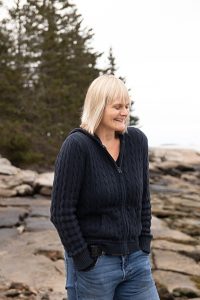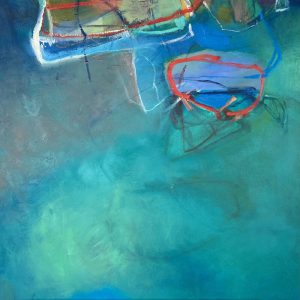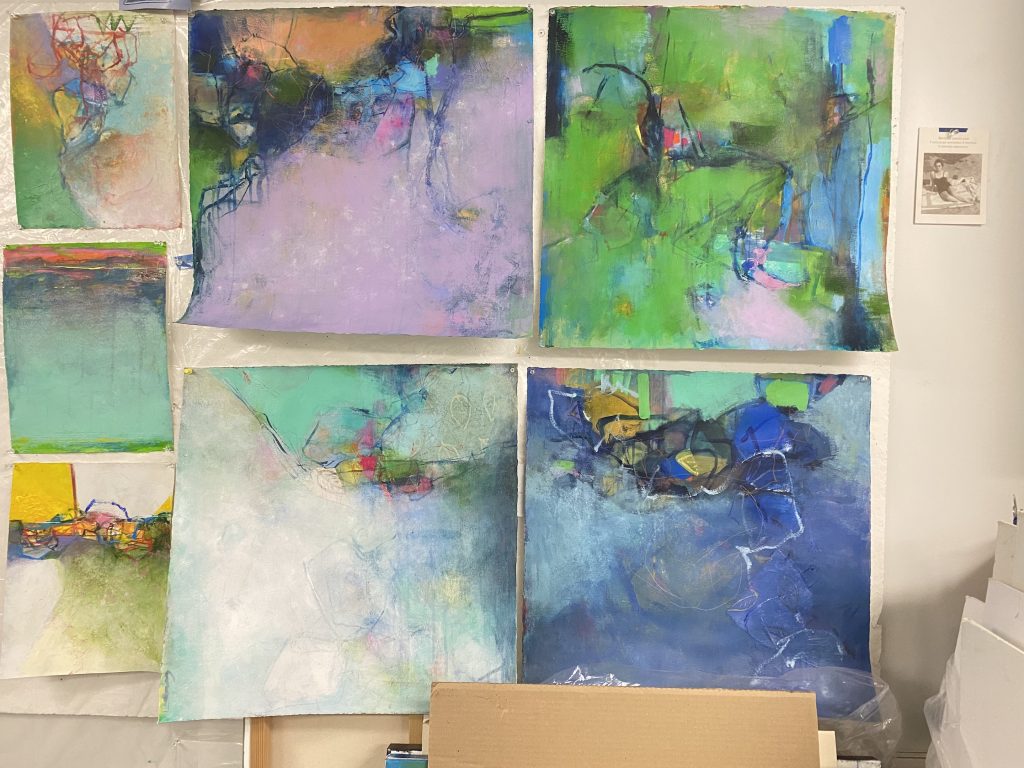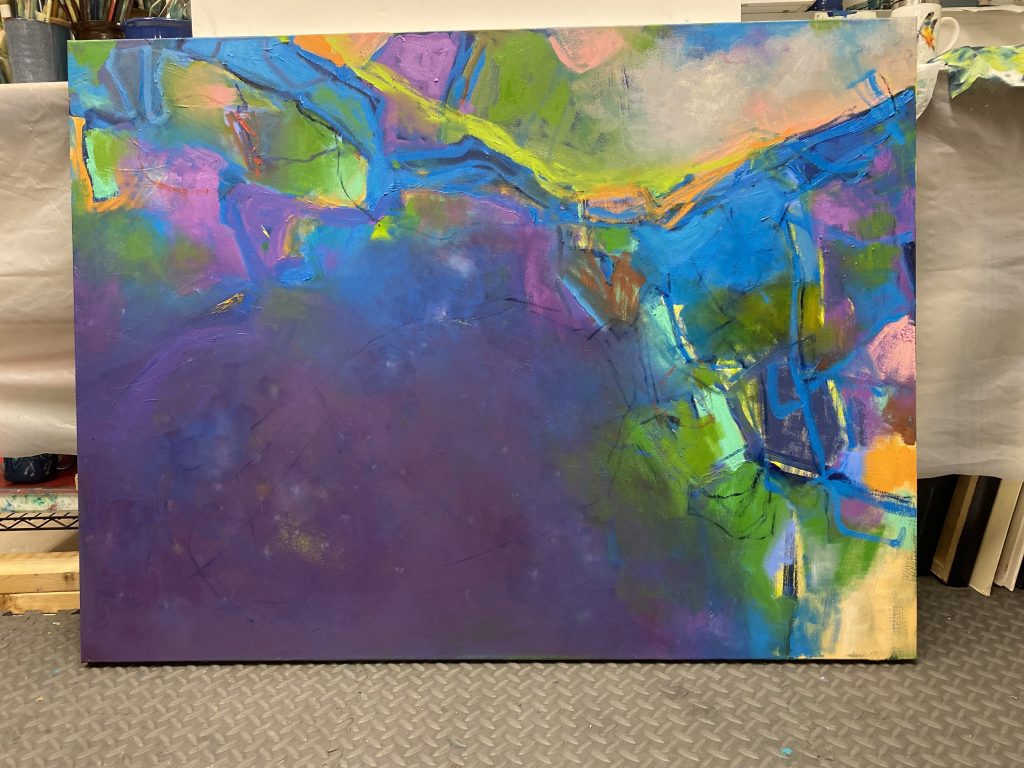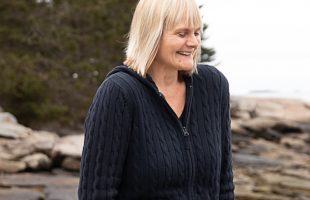
This is what the world is about – the color of the world. Let’s just drink it in. These, the words of Erika Manning, studio artist at 26 Split Rock Cove.
I had a chance to sit with Erika Manning about her work last week, and listened to her talk about her work, her artistic practice, as well as learn a little about her life. Manning’s work is primarily oil paintings, though she spends a lot of time drawing as well in other mediums, like acrylic.. She generally works in series of about 12 paintings, though it’s the paintings that seem to let her know when the series is finished.
Manning lives in midcoast Maine, having spent her early years in Camden. She comes from a “wildly wacky family of artists” she says, and grew up thinking it was normal to have an enameling kiln in the kitchen. Her grandfather was a wrought iron sculptor and did a lot of black line-stained glass work. Her dad was a fine illustrator of wooden boats. And so, the use of line is in her DNA.
When beginning a painting, Manning starts with big gestural lines, in Prussian Blue or Pthalo Blue. It is the underlying structure of what’s to come. The underpainting is often in acrylic so as not to overdo the Gamsol or turpentine odors. The line structure, then, begins to disappear into the background, or it’s covered up peeking through the layers of paint. Perhaps she’ll do some collage in the first passes. And then she waits. Drink cups of tea. Mulls it over, perhaps meditating before moving on.
Manning attended massage and yoga school many years ago, after her time at The Art Institute of Boston. She is deeply grounded in the body and meditative practices of her training. She also sees color as spiritual – perhaps not to the extent of the Blaue Reiter Group, an early 20th century group of German Abstractionists – but as a healing way of working. One also sees Kandinsky as an influence in her work.
In her current series, in which she might be midway, one sees the line coming to the front and disappearing behind patches of brilliant color. The lines are disjointed and ragged, as rocks in our quarries or along our Maine coastlines might appear. You might think the depicted landforms would be gray or brown, but here they are in brilliant blues, greens, reds, and purples. “I love color” she says, telling me about a former instructor who told her once that her coloration was “too pretty.” She deferred for a while, making prints in blacks, greys and whites. And then decided she needed color. Full blast.
During the pandemic, when wanting to confront the reliance on the black/blue line, Manning attended a virtual residency master class, which she found inspirational. She made paintings with no black/blue lines. The resulting paintings were very soft and starry, like constellations. It was an important body of work in which she made a series of paintings exploring color. “It was really out there, like you were looking at night.” Manning took it to completion after which she realized she wanted and needed the structure of the line.
Having spent so many of her early years on the coast of Maine, the linear structure reflects our rocky coast, the granite from the quarries, and the bird’s eye view of the coastline. Manning says, “it’s more of a metaphor of looking down on our lives, and where our paths have taken us.” Her work always goes through many drafts, and she comes to a midway point which she calls the awkward phase.
Artists know they can get tripped up along the way. All of us encounter frustration, dead ends, and so we need to know what is necessary to move towards completion. Tea. Meditation. A consciousness of your own process. Manning says to herself “Okay, just stop here, you’re in the awkward phase.” In reflecting on the progress of her paintings, she says, “You get to this middle point, like this little purple-y one down here, that’s its awkward phase. I always get to this point where I’m overworking them. I have to put them away for a couple weeks and see what they need.” And in a kind of double speak, which all artists recognize, she says, “You have to get there, before you get there.”
And then we looked at each other and nodded.


